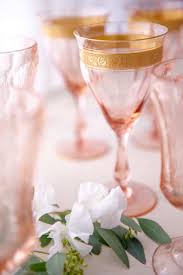Roaring 20’s Wedding Traditions for Your Wedding
- Wedding Day Diamonds
- Jan 23, 2020
- 4 min read
Updated: Jul 15, 2021

The 20’s are back! And it turns out many of the Jazz Era’s top wedding trends are perfectly suited to today’s weddings. Here are the six elements of flapper weddings that are ideal for your 2020 affair.
Though the Roaring Twenties are thought to be a time of unrestrained opulence, they were also an era of prohibition, and this had a big impact on 1920’s weddings. For one thing, weddings tended to be weekday events. They were customarily held in the afternoon, giving the bride and groom enough time to get ready, while still getting them to the courthouse before it closed for the day. Yes, the 20’s were filled with justice-of-the-peace weddings.
Because crazy parties with copious amounts of alcohol would have been illegal, receptions, by necessity, were held at home. Flappers, much like Millennials, married at later ages than their parents. They had a different set of priorities, and this meant that without fail, flappers spent less money on their rings and wedding day festivities, opting instead to put more of their resources towards honeymoons and starter homes.
However, this sensibility doesn’t mean they didn’t celebrate their big day with flair. Flappers knew how to make the most out of details… details that can be easily replicated at your 2020 wedding.
1. Bridesmaid Separates
Bridesmaid dresses weren’t a given in the twenties. Instead, many brides chose to put their ladies in skirt and blouse combos.

We love this trend because taken apart, each piece becomes infinitely more re-wearable than your traditional bridesmaid gown. We think this is one 1920’s trend all your modern gals will appreciate.
2. Cloche Hats and Whimsical Headbands
For as much as we think the 1920s were all opulence and excess, in actuality, the close-fitting, masculine-inspired cloche hat, (a standard accessory for 1920’s brides), were a restrained contrast to the long, hand-sewn lace veils of the flappers’ predecessors. Headbands were even more of a departure. Women’s liberation meant women were enjoying showing off more of themselves, and drawing attention to, rather than veiling, their own faces. We approve.
3. Bridesmaid Hats
While brides tended to wear small, masculine-inspired cloche hats or dazzling headbands, bridesmaids nearly always wore brimmed hats, and if the brims were asymmetrical, all the better.

We love incorporating this trend into modern weddings, especially those where the bridesmaids may be sporting mix and match gowns. Not only will the right hat look fabulous, it will ensure your bridesmaids aren’t sunburnt or squinting through your outdoor ceremony. Another perk? A hat allows bridesmaids to be pretty low-maintenance with their hair, skipping updos all together.
4. Wedding Diary

Wedding Diaries have all but faded from existence, and we really don’t understand why. Ask your grandma, and she probably kept one. Traditional wedding diaries offered brides the chance to record their own love story for longevity. They offered pages where she could reflect on her nuptials, describe the way they met, their courtship, his proposal and their period of engagement. They had areas to write about future goals, and to insert pictures or even drawings of their first home.
Wedding diaries were meant to be for private use, but offered a beautiful way for a bride to share her story with future generations. We like these even better than guestbooks because wedding diaries give brides a place to record her own thoughts and feelings on the big day. However, a hybrid diary-guestbook would be very cool, where guests could read your story, before adding to it.
5. Foliage Garlands

Forget tight and tidy bouquets. 1920’s brides went for wild vines of greenery. Everything long and lean was in, from straight-lined dresses to marquise-shaped diamonds. This trend touched on wedding flowers, too. 1920’s brides often carried garlands of greenery which draped nearly to the floor. The shapes of wedding bouquets were big and unruly, perfect expressions of the fancy-free ethos of the time.
The bouquets were made overwhelmingly of green foliage, and flowers, if there were any, tended to be common, local varieties, with calla lilies and daisies making regular appearances. We love this trend because it’s so much more eco-chic than today’s exotic buds.
6. Cakes Prioritizing Flavor Over Decoration.

That isn’t to say they weren’t pretty. They just didn’t look anything like our modern idea of wedding cakes. For one thing, they tended to be homemade. For another, bride and groom cake toppers hadn’t been invented yet.
Flapper brides often served delicious, brightly colored but affordable options, such as pineapple upside cakes. Many brides forwent cakes all together, opting instead for mixed fruit cups decorated with marshmallows.
What made 1920’s era wedding desserts fancy wasn’t the ingredients, but what those ingredients were served on. Wedding desserts would be served on china, crystal, or colored glass plates, dinnerware that wouldn’t have been used every day.
What may have seemed opulent was, in many ways, quite frugal. The “opulent” elements were those that could be reused, like fine china or special silver. This was in line with their ethos to spend on a home, and all the furnishings for that first home, rather than on disposable elements used only on their wedding day. They may have known how to throw a party, but that didn’t mean they were frivolous. Talk about being ahead of their time...









